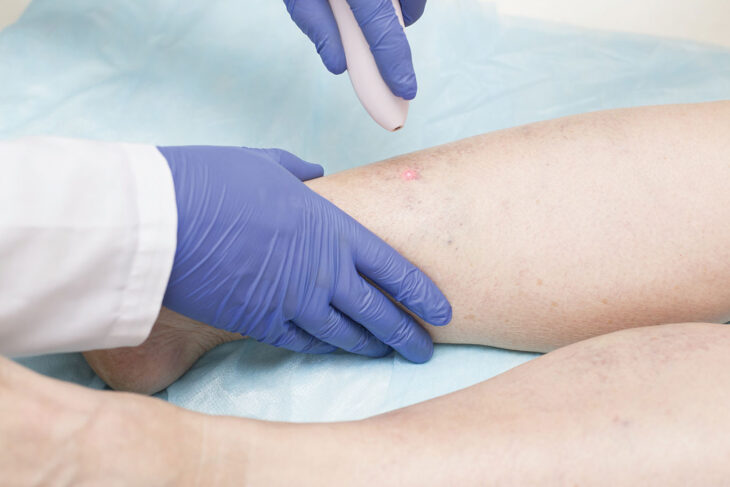For decades, the standard treatment of varicose veins had been vein stripping. Yes, it sounds rough (and it was as bad as it sounds).
With vein stripping, the affected veins were completely removed with surgery, i.e., “stripped” out. This procedure was performed under general anesthesia in a hospital so, as you might imagine, it required the headache of having to get pre- operative labs, x-rays, EKGs, not to mention the hours spent in the hospital the day of surgery and in post-op recovery. After a vein-stripping surgery, it would take weeks to recover before you could get back to being active or returning to work. Thankfully, nowadays, things are different.
For those suffering from swollen, achy legs, skin discoloration and/or leg fatigue and heaviness, alternative varicose vein treatments have emerged and proven successful. These treatments are non-invasive, non-surgical, office-based and require little to no recovery time. For today’s vein patient, these types of treatments definitely are worth exploring.
The latest technique that has been highly successful with minimal discomfort is venous closure. Endovenous laser therapy (EVLT), using laser energy, and radiofrequency ablation, using radio-frequency energy, are two methods whereby heat energy is applied to the affected vein under ultrasound guidance, causing it to seal shut and eventually be reabsorbed naturally back into the body. Doing so stops blood from pooling in faulty veins, allowing it to reroute to healthier veins, and restores proper circulation back to the heart.
Sclerotherapy is another treatment that offers effectiveness, simplicity and no downtime, with most patients resuming normal activities soon after the procedure. A sclerosing solution (liquid and/or foam) is injected into the unsightly varicose or spider vein, causing it to close and eventually fade away. Multiple sessions of sclerotherapy may be required to achieve optimal results.
For larger varicose veins that may not be candidates for endovenous closure (sometimes referred to as “ablation”) or sclerotherapy, microphlebectomy is another minimally invasive, office-based procedure that also uses local anesthesia. A few tiny skin knicks are made along the vein, and specialized instruments are used to gently remove portions of the affected segments. The incisions typically are so small that stitches are not required. Microphlebectomy offers immediate visible results, and patients usually can resume normal activities shortly after treatment.
It’s important to consult with a board-certified vein specialist to determine which treatment options are best suited to each patient’s conditions and needs. This is how you achieve vein care success.
Dr. J. Keith Thompson is medical director of the Vein Institute in Hattiesburg (and D’Iberville- summer 2023) and is a full-time, board-certified vein specialist. Reach him at (601) 336-8368.



